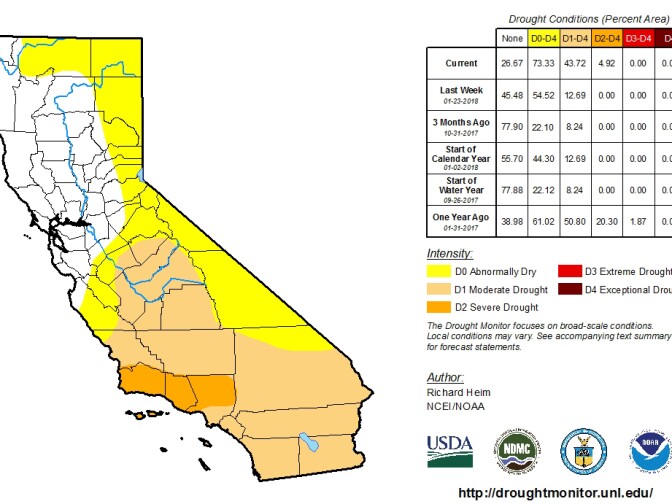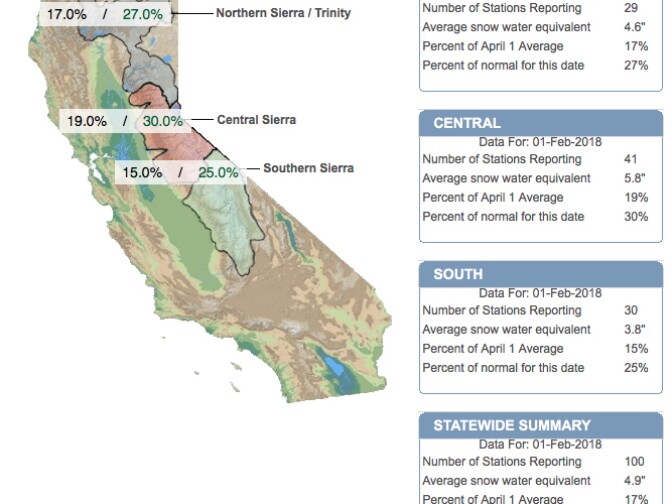Truth matters. Community matters. Your support makes both possible. LAist is one of the few places where news remains independent and free from political and corporate influence. Stand up for truth and for LAist. Make your year-end tax-deductible gift now.
This archival content was originally written for and published on KPCC.org. Keep in mind that links and images may no longer work — and references may be outdated.
This winter is so hot and dry that 'severe drought' has returned to SoCal
Large swaths of Southern California have slipped back into severe drought according to a weekly report released by the U.S. Drought Monitor, part of the National Drought Mitigation Center at the University of Nebraska-Lincoln.
On Thursday, they updated their map to show that conditions have worsened in Santa Barbara, Ventura and Los Angeles counties in the midst of an unusually hot and dry winter.
The three counties struggled to fully recover following the crippling drought that lasted from 2012 to 2017, only ever receiving a moderate classification, even after the downpours in January and February of last year.
"You don’t recover from five years of record drought with one wet season," said Richard Heim, meteorologist with NOAA and author of this week's drought map. "When we have this dryness pop up, three, four months during the wet season of no rain, no precipitation, or low precipitation, then it’s kind of like uncovering this huge horrible situation that pops up pretty fast."
That's been the situation in Southern California, with hot and dry conditions enabling the largest wildfire in state history to rip through the area, and an increased fire risk persisting through what's supposed to be the wettest part of the year.
To date, the Los Angeles basin has received less than 20% of the water that's normally expected by this time of year.
Other parts of the state are also struggling. The total amount of snowpack is only 27% of normal, which is concerning considering the state gets most of its water between December and February.

Drought conditions have been worsening recently. Just last week, only 13% of the state had moderate drought conditions. This week, it's 44%.
The dry conditions could immediately impact ranchers whose animals depend on grasses that grow following winter rains. However, many of California's reservoirs are still at or above average capacity after 2017, meaning that agricultural operations and cities across the state will be able to draw on the reserves.

The U.S. Drought Monitor draws input from different sources, including state climatologists, regional climate centers and various government agencies to inform their reporting. They then factor in information they receive about things like the snow pack, precipitation levels and evapotranspiration rates, to inform which areas they consider to be experiencing drought conditions.
This story is part of Elemental: Covering Sustainability, a new multimedia collaboration between Cronkite News, Arizona PBS, KJZZ, KPCC, Rocky Mountain PBS and PBS SoCal.













